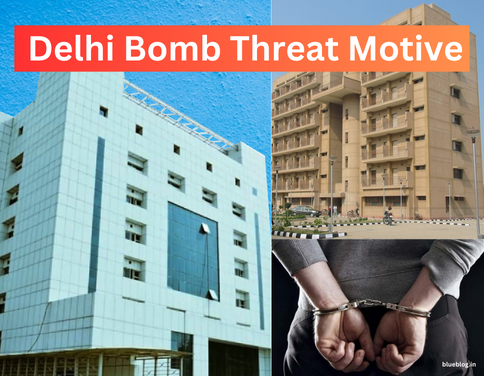The dangerous situation unfolding in New Delhi is a matter of utmost concern and requires our immediate attention. We, as responsible citizens and stakeholders in the safety of our communities, must address this issue with the seriousness it demands. In this comprehensive article, we shed light on the recent bomb threats received by two major hospitals in Delhi, highlighting the alarming sequence of events, the response of authorities, and the wider implications for public safety and security.
Bomb threat targeting hospitals
The peace in the National Capital Region was disrupted when two reputed healthcare institutions, Burari Hospital and Sanjay Gandhi Hospital, faced dangerous bomb threats. These threats, sent via email, have created fear and uncertainty, echoing similar recent incidents that have plagued the region.
Response and investigation efforts
In the face of such grave threats, law enforcement agencies quickly mobilized to neutralize the imminent threat. Mangolpuri police, with the assistance of special units including bomb disposal squad and fire service, carried out careful searches to ensure security in and around the hospitals. Despite relentless efforts, no explosive device was discovered, bringing a sigh of relief amid the tense atmosphere.
Recurring patterns: Echoes of recent threats
The tragic incidents at Burari Hospital and Sanjay Gandhi Hospital are poignant reminders of the recent turmoil that has gripped the region. Just a few days ago, over a hundred schools in Delhi, Gurugram, and Noida were plunged into chaos after similar bomb threats. The modus operandi characterizing the spread of threatening emails is very similar to previous incidents, raising concerns about the source and motives behind these malicious acts.
Trace origin
As investigators delve deeper into the origins of these threats, attention has been drawn to the sophisticated nature of criminals’ tactics. The use of VPN connections to mask IP addresses, as well as the adoption of Arabic terminology associated with extremist propaganda, indicate a concerted effort to sow fear and disruption. Speculation about the possible involvement of international actors, particularly highlighted in the context of the Russian domain, underlines the international dimensions of this crisis.
Uncovering objectives
Investigating the motivations behind such heinous acts is a multidisciplinary endeavor, tracing the complex interplay of various factors that shape individual and collective behavior. Although initial estimates may point to the influence of extremist ideologies, the evolving nature of these threats requires a nuanced understanding that goes beyond simplistic narratives.
Indeed, while terrorist organizations such as ISIS have historically been associated with acts of violence and terror, investigators are increasingly faced with the complexities of modern extremism. The landscape of radicalization has changed profoundly, with the proliferation of online platforms and extremist propaganda blurring the lines between the virtual and physical realms. In this context, the focus of investigation has expanded beyond the boundaries of established terrorist networks to include a broader spectrum of impacts ranging from geopolitical tensions to socio-economic inequalities. The grievances and grievances of communities marginalized by systemic inequalities and disenfranchisement serve as fertile breeding grounds for radicalization and extremist violence.
Furthermore, the emergence of lone actors and loosely affiliated groups has further complicated the task of uncovering the motivations behind these nefarious activities. The absence of centralized command structures and formal affiliations makes traditional counter-terrorism strategies less effective, requiring innovative approaches that address the root causes of radicalization while enhancing community resilience and cohesion. In short, the quest to understand the drivers of terrorism demands a holistic approach that goes beyond narrow ideological paradigms. By addressing underlying grievances, fostering social inclusion, and fostering dialogue and understanding, we can hope to reduce the risk of radicalization and create a more peaceful and secure future for all.
Ensuring Vigilance: Towards a Secure Future
In the wake of these distressing events, we must reaffirm our collective resolve to protect our communities from all forms of threats. Enhanced vigilance through strong security measures and active engagement with law enforcement agencies is paramount in preventing and mitigating potential risks. Furthermore, fostering a culture of resilience and solidarity within our communities serves as a powerful counterweight to the divisive narratives promoted by those who seek to sow discord and fear.
The recent bomb threats targeting hospitals in Delhi are a sobering reminder of the emerging security challenges facing our society. As we move through these turbulent times, let us draw strength from our collective resilience and unwavering commitment to upholding the values of peace, harmony, and solidarity. Together, we can overcome adversity and build a more secure future for generations.
Follow Us On Instagram Follow Us On XAlso read: Collection of Top 10 Gadgets for Under 500 Rs!

